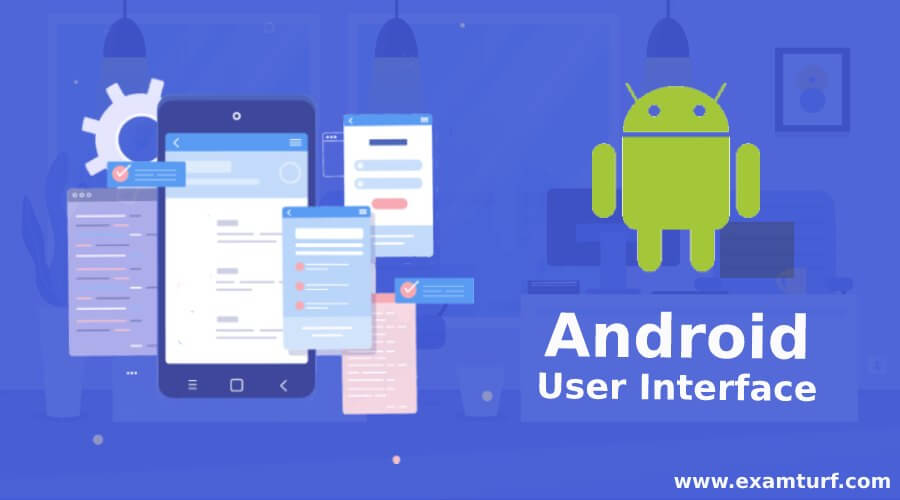
Introduction To Android User Interface
The following article provides an outline for Android User Interface. Android is basically a platform for web applications and cloud-based software which are created based on the theory of mobile operations i.e., movable digital interface. In short, we can say, Android is a mobile operating system. It was written using the likes of Java, C and C programming platforms and developed based on the upgraded version of Linux Kernel. Android can also be defined as a smart platform based on the theory of machine learning, that is, it’s programming (Android) makes it capable of assessing and implementing tasks on its own or by itself. Well, Android can also be referred to as the precursor of Artificial Intelligence and Robotics. Well, we all know what Android is, from waking up to going to sleep; it literally directs our day-to-day life. A platform specifically developed for the people, by the people and of the people.
Lets see the Android User Interface:
- The basic purpose of Android is to establish the connection between a user and an electronic/digital device.
- Android is unlike any other operating system developed previously, its flexible and versatile i.e. mobile.
- Android is the amalgamation of several different software development platforms like Java, C and others.
- Similarly, it also leads to the creation of multi-category and multi-purposed software types and packages.
- It is also free and open-sources based making it far reached, widely used and a collective platform/product.
- Android was initially developed by Open Handset Alliance and it was largely sponsored and later upgraded into a finer and sophisticated product/platform by Google.
- The first and official commercial purpose release was in 2008 making the ‘Android’ name an intellectual property of Google only.
- Fun fact, mostly around 70% or more Android-based mobile devices or smart devices run on Google systems.
- Since its beginning, Android has been developed into one after another upgraded and even more sophisticated versions like:
- Lollipop
- Kitkat
- Jelly Bean
- Ice cream
- Sandwich
- Donut
- These versions or variants of Android are being used on a wide range of electronic and digital-based devices like games, digital cameras, smartphones, smart TVs, digital sound systems and several others.
Applications of Android are limitless and vast and it is still growing based on the multi-faceted commercial and consumer market out there.
What Is Android User Interface?
First of all, Android produces the best and a superlative User Interface, top of the class that is why so many consumers and users prefer Android-based platforms and devices. Developers of Android make it a priority, top priority actually, to research and develop Android applications and devices with the best look and also the feel of the devices and also the applications in it, it’s those nuances, caricatures overall styles i.e., the attention to details makes Android User Interfaces probably the best in the business, if not the best.
- So to simply explain what Android User Interface is, it is developed based on two operating types, the Layouts i.e. the overall structure of an Android App and the Widgets which are basically the components like buttons and text boxes, image boxes, etc.
- These two, Layouts and Widgets are generally categorized as ViewGroup and View Classes.
- Now, both the ViewGroup and View classes are defined by the XML or Extensible Markup Language.
- It is upon the XML files these Layouts and Widgets are generally established and created.
How An Ideal User Interface Should Look Like?
The more lucrative, attractive and appealing the Android User Interface looks, the greater are the chances of it being a successful commercial product in the consumer market. The looks, features and application tools present in the Android UI plays a vital role in the overall outreach and the triumph of an Android device or platform.
Some of those features and tools in an Android User Interface are:
- Structured UI layouts
- Notification overviews
- App bars
- Control of the UI visibility
- Development of a perfect navigation system
- Implementing that navigation system
- Addition of swipe up to refresh features
- Introducing Pop-up message views
- Copy and Paste features
- Drag and drop options
- Menu options
- Searching options
- Compatibility with external devices
How Developer Can Create An Ideal User Interface?
To be a well-versed and experienced developer of Android UIs, one must have the basic familiarities like:
- In-depth knowledge of Java and XML.
- Knowledge of SQL for any backend operations.
- The familiarity with the best App development kits and tools.
- The knowledge of the components to develop the app.
- Correct and timely selection of the development kits and tools.
- Along with these a developer should also have the perseverance and tenacity to develop the best Android platforms available.
Conclusion
Android User Interface System is the best UI system in the digital market without a question; it dominates the entire digital/web/cloud-based platforms for the consumer market. This platform has been producing the best-selling devices of all types since its introduction to the commercial market space by Google. It has not only doubled but quadrupled financially and also the continuous revenue stream and hunger for far more sophisticated and viable products by the daily users of it has propelled further R&D and inventions. So we can say that the best Android system is yet to come and the future of Android looks bright.
Recommended Articles
This is a guide to Android User Interface. Here we discuss the introduction, how an ideal user interface should look like and how a developer can create an ideal user interface. You can also go through our other suggested articles to learn more –
Are you preparing for the entrance exam ?
Join our Mobile Development test series to get more practice in your preparation
View More